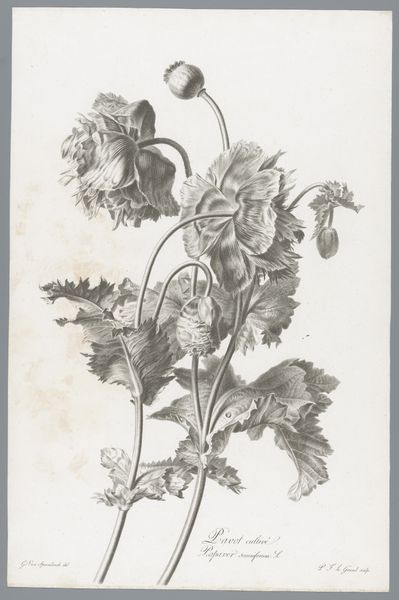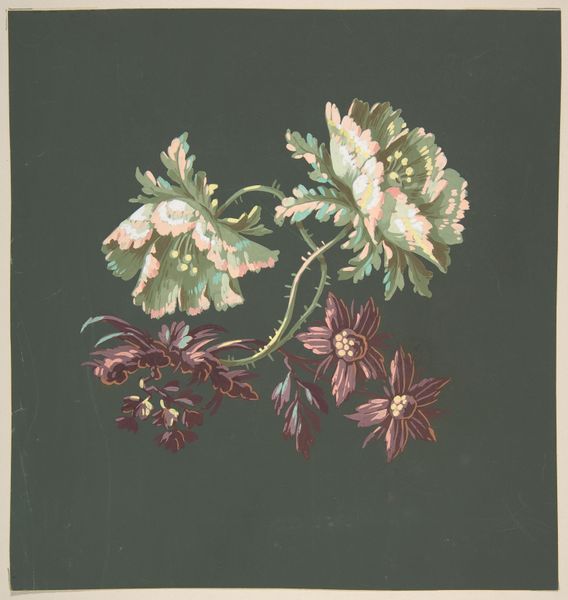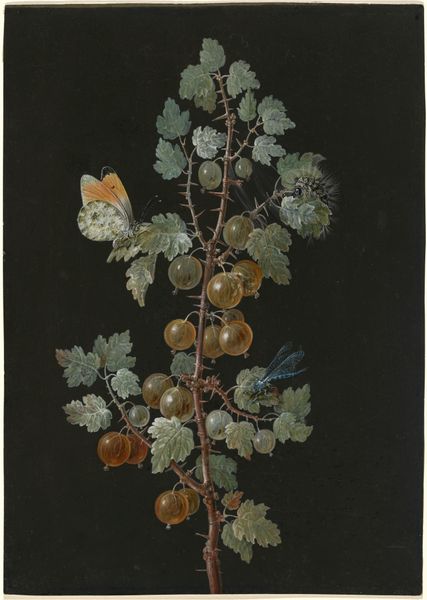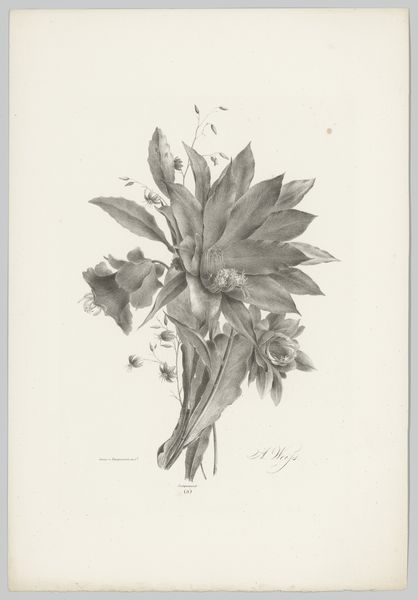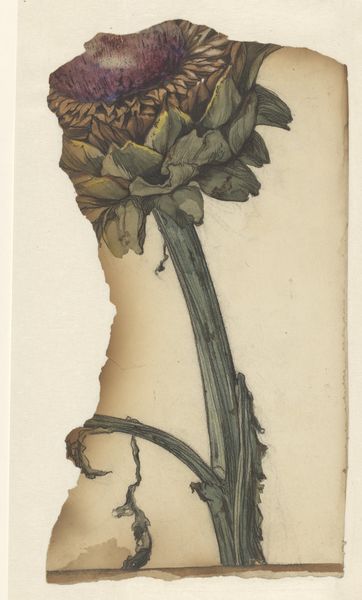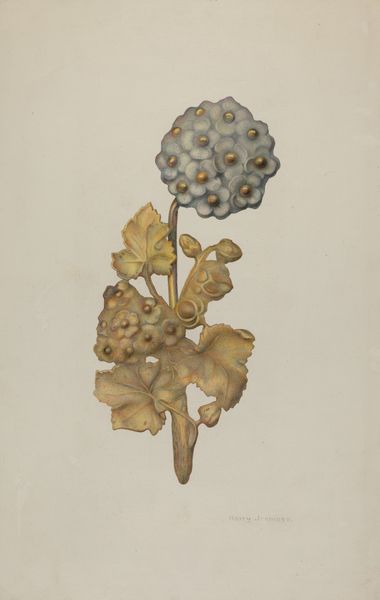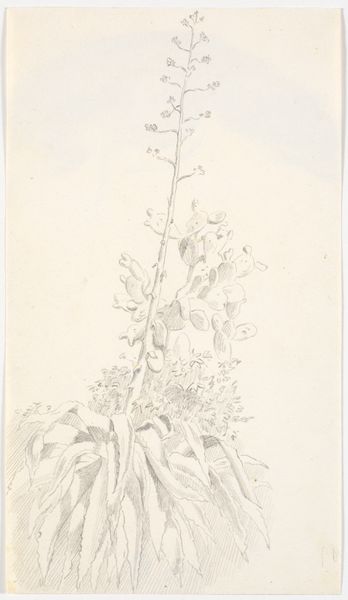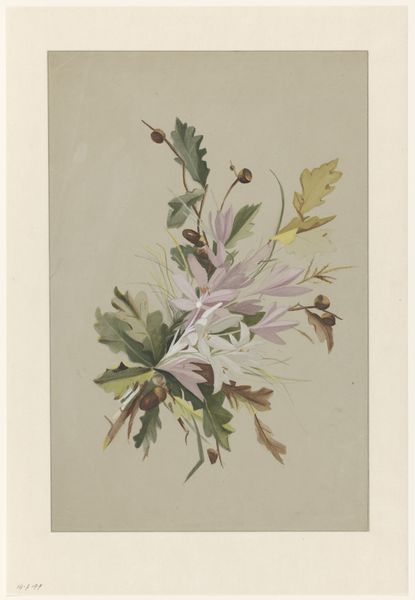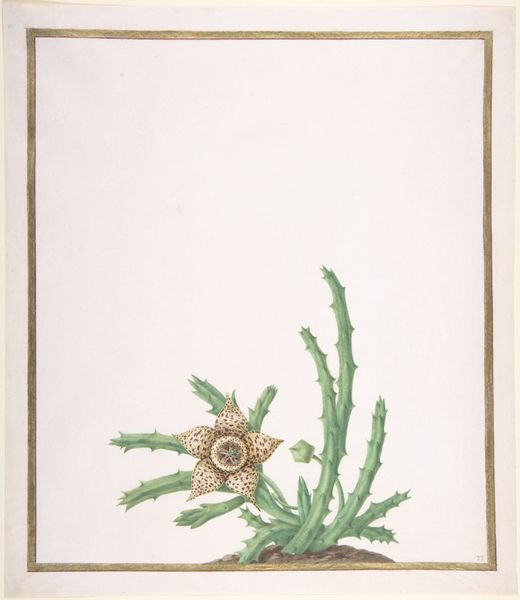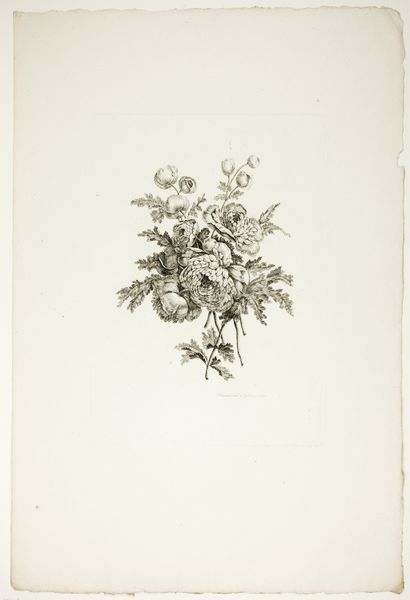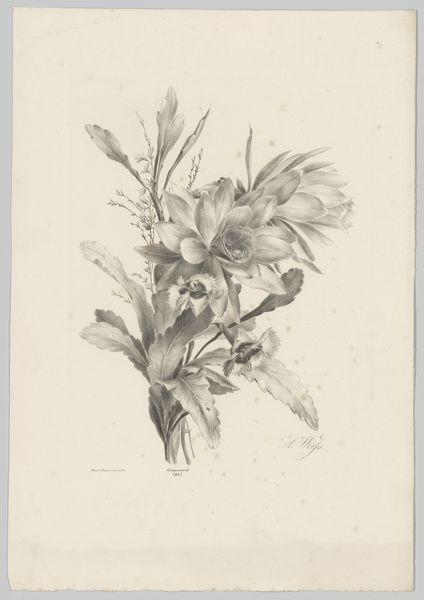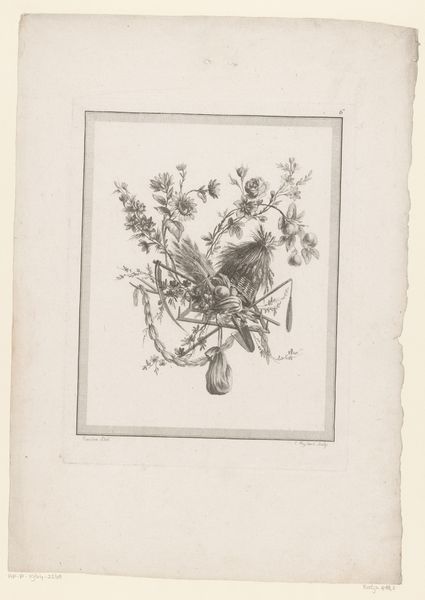
drawing, watercolor
#
drawing
#
water colours
#
watercolor
#
underpainting
#
naturalism
Dimensions: sheet: 28.6 x 20.6 cm (11 1/4 x 8 1/8 in.)
Copyright: National Gallery of Art: CC0 1.0
Editor: So, here we have "Thistle with Insects," a watercolor drawing from around 1755 by Johann Christoph Dietzsch. It’s so detailed! The muted colors and the dark background create such a somber mood. What strikes you most about it? Curator: What intrigues me is how this detailed botanical study participates in a broader shift in the 18th century. The rise of scientific societies, exploration, and a growing interest in natural history fueled a demand for accurate depictions of the world. Think about how these images functioned: were they purely scientific records, or were they also communicating ideas about ownership and control of the natural world? What might this seemingly innocuous thistle symbolize in that context? Editor: Ownership and control? I hadn't thought of it that way. The thistle itself is so prickly, almost defensive. Does the presence of the insects soften that reading, or complicate it? Curator: Exactly! The insects could represent a harmonious interaction with nature, fitting within a then-current Linnaean system of categorizing and ordering. However, think about how such scientific categorization might also represent a desire to dominate nature intellectually, taming it through observation and representation. It's like a visual manifestation of the Enlightenment's project of knowledge. Could the dark background amplify the way botanical drawings such as this example participated in colonialism? Editor: That’s fascinating. It's made me rethink how seemingly objective art can still be deeply rooted in socio-political power dynamics. It’s certainly a thorny subject! Curator: Precisely. Recognizing these complexities deepens our understanding of art’s role in shaping not just what we see, but how we see it, and why.
Comments
No comments
Be the first to comment and join the conversation on the ultimate creative platform.
